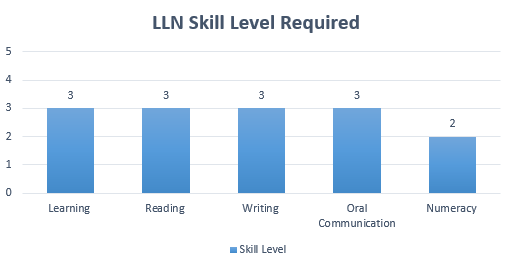The construction industry is all about building, altering or destroying buildings and other structures. While the rate of construction injuries and fatalities has fallen considerably over the past decade, the industry is still considered a high risk environment for its employees. As such most employers take workplace safety very seriously and it’s important to know which tradies are the most at risk.
The construction industry grew by around 33% over the 11 years between 2001 and 2012. In the 2012-13 financial year, the construction industry accounted for 9% of the workforce, yet made up just 10% of all work-related compensation claims for injuries or disease that resulted in one or more weeks off work. Given the nature of industry, it’s clear construction safety is a high priority, and construction induction programs have an enormously positive impact on the safety of employees. White card accreditation programs have been extremely successfully in preparing employees for the kinds of hazards they can expect on site, and it is now compulsory to have a white card before being allowed to work on a construction site.

Which tradesmen are most likely to be seriously injured?
A serious injury is defined as one that renders the employee incapacitated and unable to work for at least one working week. In the 11 years from 2001-2012, the rate of serious injury in the construction industry fell by 31%, from 27.5 to 17.5 worker’s compensation claims per 1000 employees. In comparison, the rate of worker’s compensation claims for all industries combined was 12 per 1000 employees, so while the trend is heading in the right direction, there is still some way to go to be on par with the Australian workplace as a whole.
In the five years from 2008-2013, carpenters and joiners, plumbers and electricians made up 55% of all worker’s compensation claims from the top 10 tradesmen most likely to be injured on a construction site. The combined compensation claims of the top 10 (see below) made up half of all compensation claims in the construction industry.
| Occupation | Percent |
| Carpenters and Joiners | 13% |
| Plumbers | 8% |
| Electricians | 7% |
| Building and Plumbing Labourers | 6% |
| Concreters | 4% |
| Structural Steel Construction Workers | 4% |
| Truck Drivers | 3% |
| Plasterers | 2% |
| Painting Trades Workers | 2% |
| Earthmoving Plant Operators | 2% |
What are the most common types of serious injuries for each trade?
The types of serious injury that tradesmen can sustain on the worksite fall into five categories:
-
- Body stressing – muscle stress caused by lifting, carrying and pulling objects; or some other sort of muscle stress
-
- Falls, trips and slips – either from the same level, or from a height
-
- Being hit by objects – this is split into two subcategories…moving and falling objects
-
- Hitting objects with a part of the body – moving and stationary objects
- Other mechanisms
In the period from 2008-2013, there were 618,565 worker’s compensation claims for serious injuries. The most common serious injury category was body stressing, accounting for 37% of all claims across the construction industry, followed by falls, trips and slips with 28%. Being hit by objects (17%), hitting objects with a part of the body (10%) and other mechanisms (8%) were by far the three least common complaints.
Each category can be further broken down into the nature of the injury sustained. From the top five most injured tradesman outlined in the list above, injuries from body stressing, and falls, trips and slips, were the top two categories for each occupation. In terms of the injuries sustained for each category, the results were also very similar. Body stressing tended to cause musculoskeletal and connective tissue damage, and/or traumatic joint, ligament, muscle and tendon injuries, while falls, trips and slips were most likely to cause fractures above any other sort of injury. Wounds, lacerations, amputations and internal organ damage from being hit by moving objects are also relatively common.

How can you stay safe on a construction site?
The outlook for the construction industry is very positive over the next few years. As such more positions are going to become available on construction sites, and more people are going to be needed to fill them. Staying safe on a construction site requires three elements – common sense from you and your work colleagues, and education and training so new employees can drastically reduce the chances of being involved in a serious incident.
Before being allowed to enter a construction site, employees must complete a White Card course (CPCWHS1001 – Prepare to work safely in the construction industry). This will provide you with the knowledge required to identify:
-
- OHS legislative requirements
-
- Constructions hazards and control measures
-
- Communication and reporting processes, and
- Incident response procedures
Depending on where you are, the White Card courses can be completed online in the comfort of your own home, and at your own pace, you can confirm your eligibility to complete the white card course online here.
In total the course only takes a few days, and the accreditation is recognised Australia-wide. This construction induction course will provide you with information that could potentially reduce your chances of sustaining a serious injury, or something far graver such as a permanent disability or fatality.



